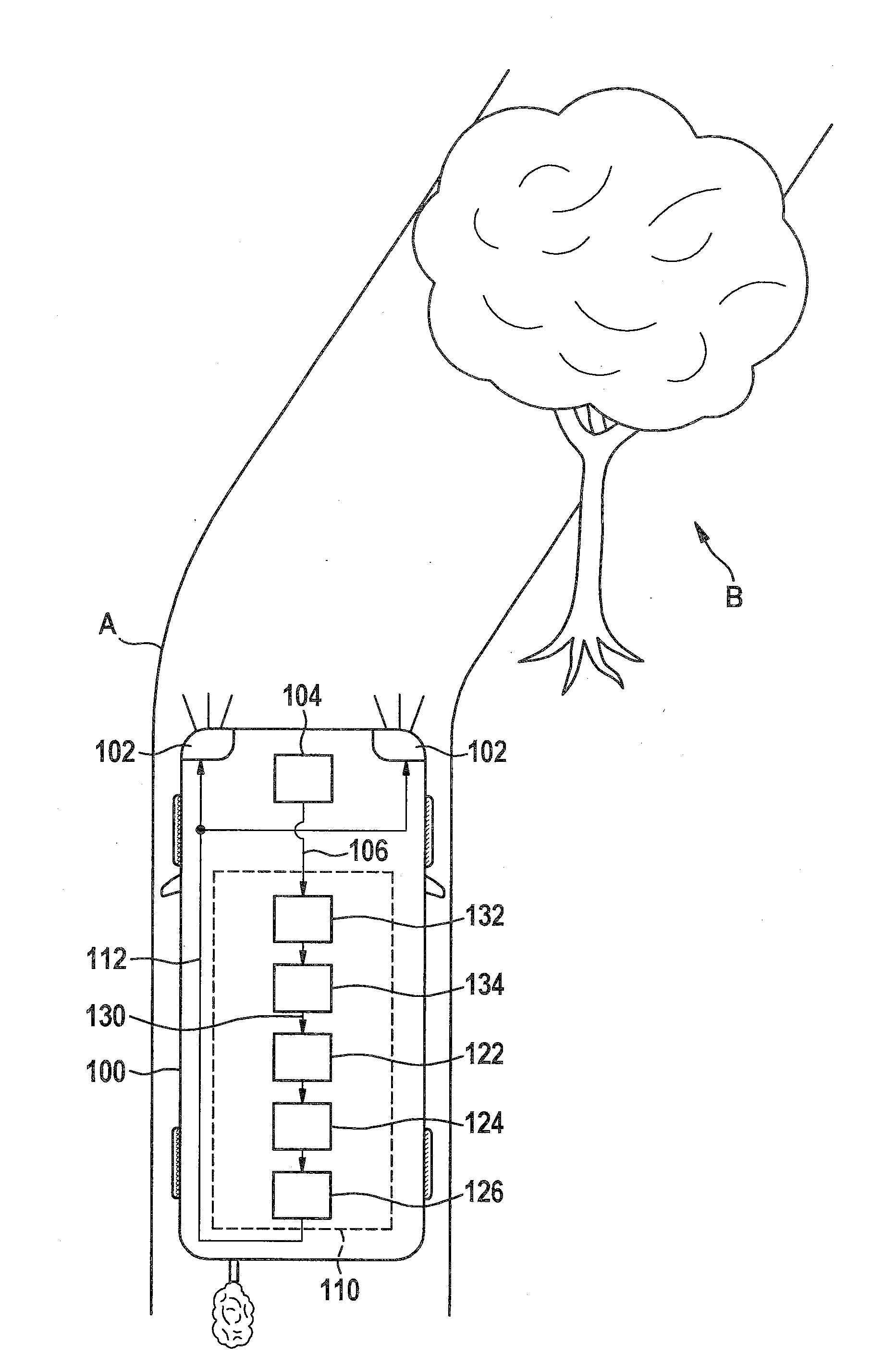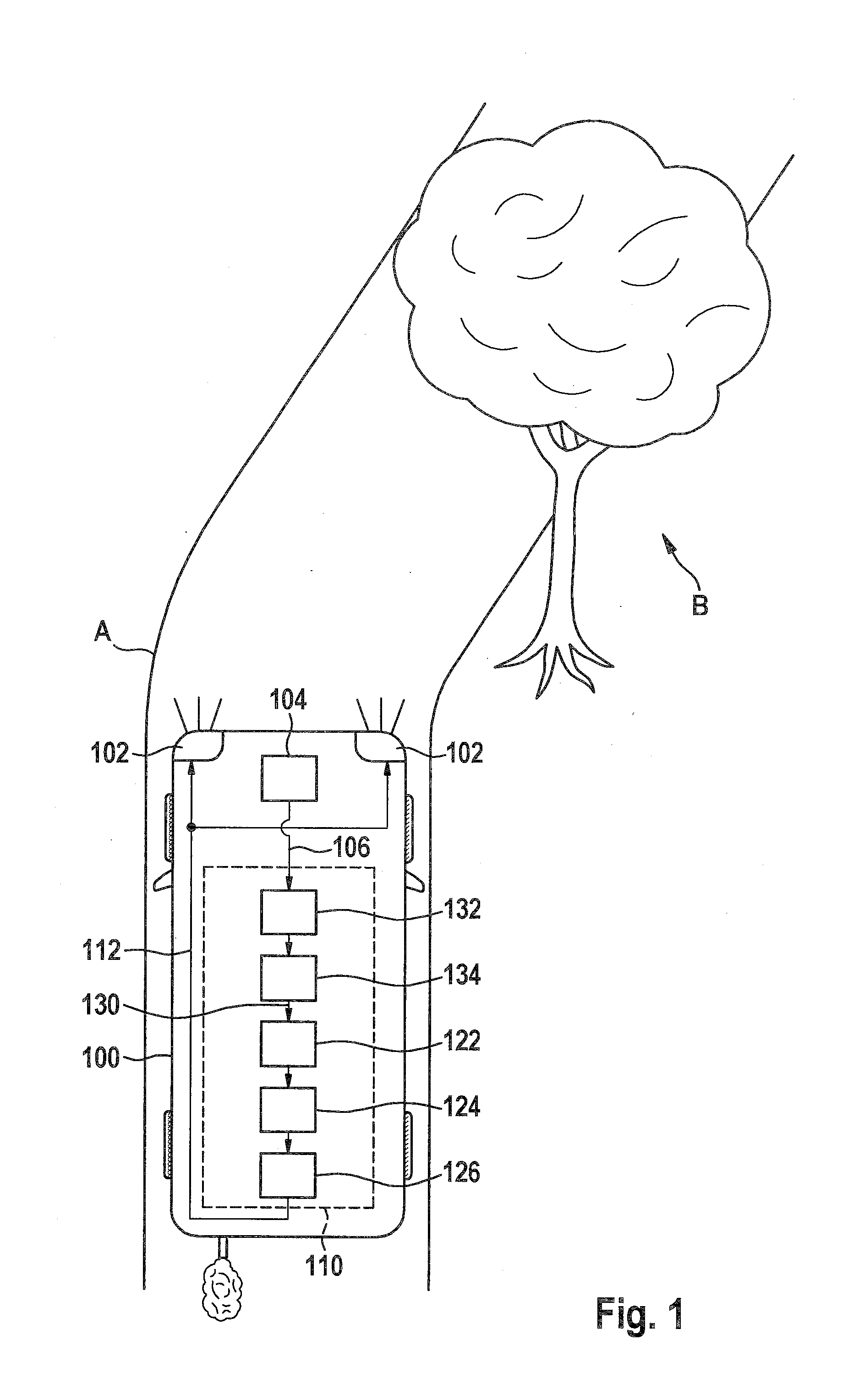Method and control unit for setting at least one parameter of a driver assistance device of a vehicle
a technology of driver assistance and control unit, which is applied in the direction of vehicle components, signalling/lighting devices, optical signalling, etc., can solve the problems of increasing the visual range by turning up the headlights to be too small, and achieve the effect of reducing the perceived image contrast, avoiding discomfort, and avoiding discomfor
- Summary
- Abstract
- Description
- Claims
- Application Information
AI Technical Summary
Benefits of technology
Problems solved by technology
Method used
Image
Examples
Embodiment Construction
[0028]In the following description of advantageous exemplary embodiments of the present invention, identical or similar reference numerals are used for the elements having a similar action which are illustrated in the various figures, and a repeated description of these elements is dispensed with.
[0029]For the purpose of simplification and readability, exemplary embodiments are sometimes described in particular with regard to a classical high beam assist as the driver assistance device, use also being provided for adaptive systems, resulting in a change in system dynamics. In adaptive systems, a short waiting time period corresponds to a rapid system response, as the result of which, for example, a target light distribution or target characteristic is achieved more quickly, and a long waiting time period corresponds to a slower, more sluggish system response, as the result of which a target light distribution or target characteristic is achieved later or more slowly.
[0030]FIG. 1 sho...
PUM
 Login to View More
Login to View More Abstract
Description
Claims
Application Information
 Login to View More
Login to View More - R&D
- Intellectual Property
- Life Sciences
- Materials
- Tech Scout
- Unparalleled Data Quality
- Higher Quality Content
- 60% Fewer Hallucinations
Browse by: Latest US Patents, China's latest patents, Technical Efficacy Thesaurus, Application Domain, Technology Topic, Popular Technical Reports.
© 2025 PatSnap. All rights reserved.Legal|Privacy policy|Modern Slavery Act Transparency Statement|Sitemap|About US| Contact US: help@patsnap.com



